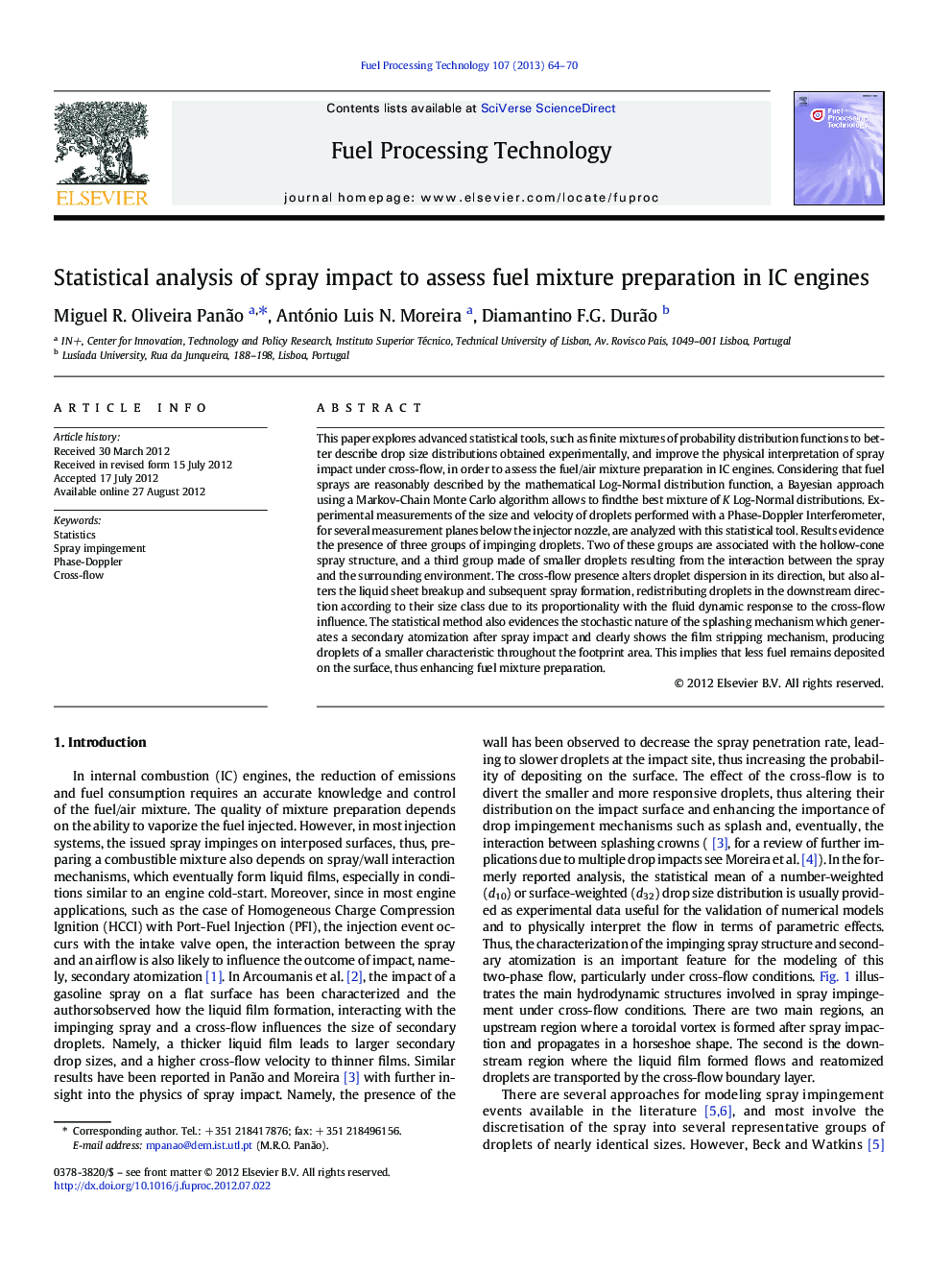| Article ID | Journal | Published Year | Pages | File Type |
|---|---|---|---|---|
| 210214 | Fuel Processing Technology | 2013 | 7 Pages |
This paper explores advanced statistical tools, such as finite mixtures of probability distribution functions to better describe drop size distributions obtained experimentally, and improve the physical interpretation of spray impact under cross-flow, in order to assess the fuel/air mixture preparation in IC engines. Considering that fuel sprays are reasonably described by the mathematical Log-Normal distribution function, a Bayesian approach using a Markov-Chain Monte Carlo algorithm allows to findthe best mixture of K Log-Normal distributions. Experimental measurements of the size and velocity of droplets performed with a Phase-Doppler Interferometer, for several measurement planes below the injector nozzle, are analyzed with this statistical tool. Results evidence the presence of three groups of impinging droplets. Two of these groups are associated with the hollow-cone spray structure, and a third group made of smaller droplets resulting from the interaction between the spray and the surrounding environment. The cross-flow presence alters droplet dispersion in its direction, but also alters the liquid sheet breakup and subsequent spray formation, redistributing droplets in the downstream direction according to their size class due to its proportionality with the fluid dynamic response to the cross-flow influence. The statistical method also evidences the stochastic nature of the splashing mechanism which generates a secondary atomization after spray impact and clearly shows the film stripping mechanism, producing droplets of a smaller characteristic throughout the footprint area. This implies that less fuel remains deposited on the surface, thus enhancing fuel mixture preparation.
► Advanced statistics using finite pdf mixtures improves physical interpretation of sprays. ► Three groups of droplets are identified: two from atomization and one due to interaction between spray and air. ► Cross-flow redistributes droplets by size classes within spray impingement footprint. ► Statistics associated with finite mixtures enable the identification of secondary drops by film stripping.
